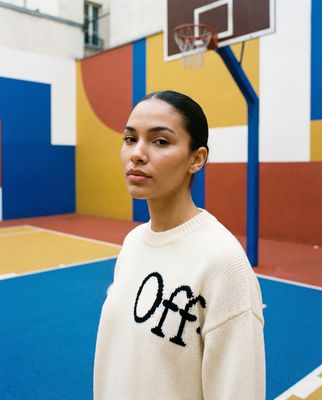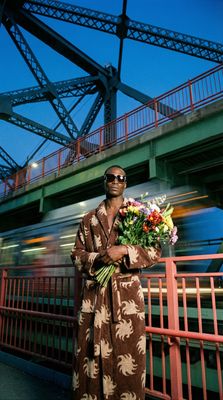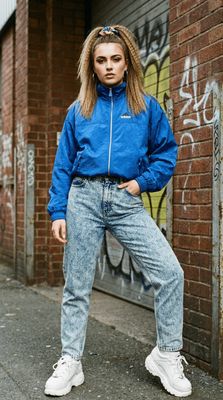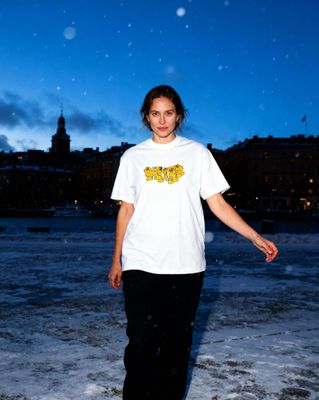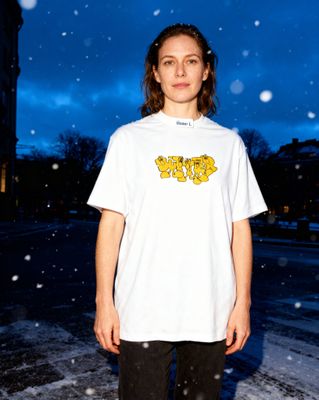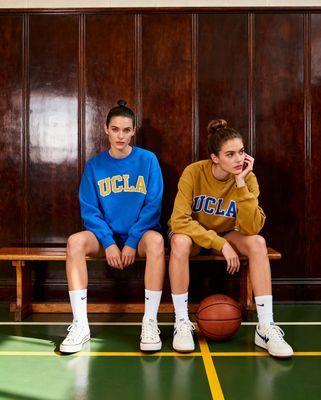Everything about the color Cobalt
The meaning of the color cobalt and color combinations to inspire your next creation.
Browse images in the color cobalt
What color is cobalt?
Cobalt is a vibrant, deep blue with a hint of brightness, often associated with the mineral cobalt from which it gets its name. This color exudes a sense of stability and calmness, reminiscent of the vastness of the ocean or the sky.
What are similar colors to cobalt?
For variations within the same deep and rich spectrum as cobalt, consider:
- Teal (#008080) shares cobalt's cool undertones but with a greenish tint, offering a more subdued, earthy vibe.
- Indigo (#4B0082) is darker and more purple, providing a mysterious and sophisticated edge similar to cobalt.
- Azure (#007FFF) is brighter and more vibrant, capturing the sky-like quality that cobalt also possesses.
- Sapphire (#0F52BA) closely resembles cobalt with its rich blue tone, evoking the luxury and depth of precious gemstones.
What color goes with cobalt?
To complement cobalt's vibrant tones, consider pairing it with:
- Coral (#FF7F50) adds a warm, lively contrast to cobalt's coolness.
- Ivory (#FFFFF0) softens cobalt's intensity with its gentle, neutral tone.
- Gold (#FFD700) provides a luxurious, warm contrast that enhances cobalt's richness.
- Mint (#98FF98) offers a fresh, cool contrast that pairs well with cobalt's deep blue.
- Peach (#FFE5B4) introduces a soft, warm balance to cobalt's boldness.
What color conflicts with cobalt?
To avoid clashing with cobalt's vibrant blue, consider avoiding:
- Red (#FF0000) can create a jarring contrast that overwhelms cobalt's calmness.
- Orange (#FFA500) may clash with cobalt's cool tones, creating a discordant effect.
- Yellow (#FFFF00) risks overpowering cobalt's depth with its brightness.
- Brown (#A52A2A) could dull cobalt's vibrant energy.
- Beige (#F5F5DC) may neutralize cobalt's intensity, resulting in a washed-out appearance.
What does the color cobalt represent?
Cobalt represents tranquility and reliability, often associated with the stability of the sea and sky. It symbolizes trust and loyalty, making it a popular choice in branding and design. Psychologically, cobalt can evoke feelings of calmness and serenity, helping to reduce stress and promote relaxation. In art and design, cobalt is used to create a sense of depth and richness, often employed in works that aim to convey a sense of luxury and sophistication.
What's the history of cobalt?
The name "cobalt" originates from the German word "kobalt" or "kobold," meaning goblin, as miners found the mineral difficult to work with. Cobalt blue pigment was first used in Chinese porcelain during the Tang Dynasty and became popular in Europe in the 18th century. Today, cobalt is widely used in various industries, from ceramics to electronics, due to its vibrant color and durability. In modern design, cobalt continues to be a favored choice for its striking and versatile hue.
Color Variations
Shades
Tints
Hues
Color Palettes
Monochromatic
Complementary
Analogous
Triadic
Tetradic
Images with cobalt color
Color Conversions
#0047ABrgb(0, 71, 171)rgb(0%, 28%, 67%)100, 58, 0, 33hsl(215, 100%, 34%)215, 100, 67#0047AB33, 23, -5810, 7, 3933, 63, 29100000000, 01000111, 10101011Color(red: 0, green: 0.2784313725490196, blue: 0.6705882352941176)UIColor(red: 0, green: 0.2784313725490196, blue: 0.6705882352941176, alpha: 1.0)Color(0xFF0047AB)